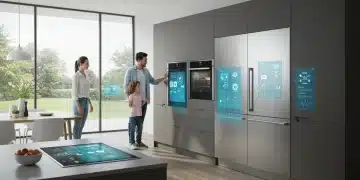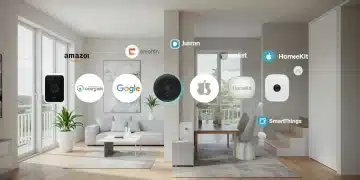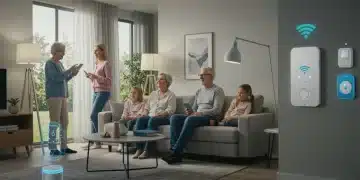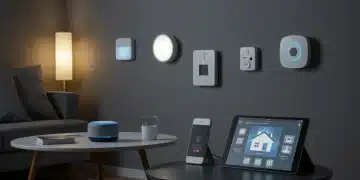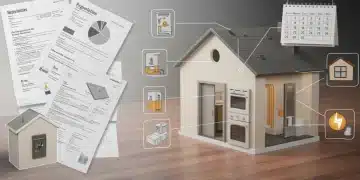Smart Home Gadgets Under $100: 2025 Must-Haves for US Homeowners (FINANCIAL IMPACT)
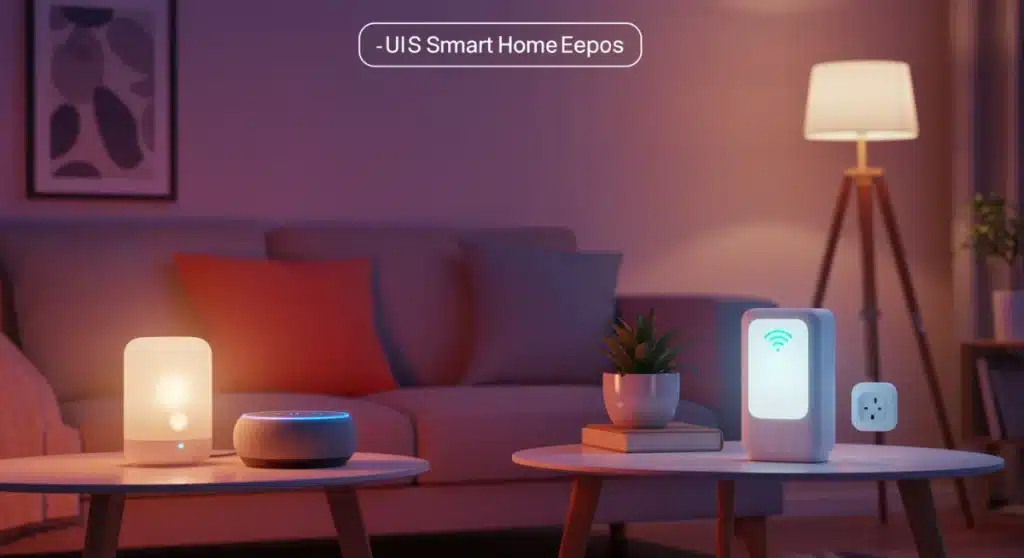
The 2025 market is brimming with affordable smart home gadgets under $100, offering US homeowners significant financial benefits through energy efficiency, enhanced security, and streamlined daily routines, proving smart living doesn’t require a hefty investment.
Breaking news for US homeowners: the landscape of smart home technology is rapidly evolving, making advanced automation more accessible than ever. As of early 2025, a surge of innovative gadgets priced under $100 is poised to transform residences, delivering significant financial benefits and unprecedented convenience. This isn’t just about futuristic living; it’s about practical, budget-friendly upgrades that impact your wallet positively.
The Rise of Budget-Friendly Smart Home Solutions
The notion that smart homes are exclusively for the affluent is quickly becoming outdated. Manufacturers are increasingly focusing on cost-effective solutions that deliver core functionalities without the premium price tag. This shift is driven by increased consumer demand for affordability and the maturation of smart home ecosystems, allowing for interoperability across various brands.
This democratization of smart technology means that enhancing your home’s intelligence no longer requires a substantial upfront investment. Homeowners can now incrementally build their smart home ecosystem, starting with essential devices that offer immediate financial returns or significant convenience improvements. The market is responding with a plethora of options that prioritize value and functionality.
Driving Forces Behind Affordability
- Increased Competition: A growing number of brands entering the market drives prices down.
- Technological Advancements: More efficient manufacturing processes and standardized components reduce production costs.
- Ecosystem Integration: Devices designed to work seamlessly with existing platforms (e.g., Alexa, Google Home) simplify setup and reduce the need for proprietary hubs.
Energy Efficiency: Smart Plugs and Lighting
One of the most immediate financial impacts of smart home gadgets comes from energy management. Devices like smart plugs and smart light bulbs, both readily available for under $100, offer tangible savings by reducing electricity consumption. This is particularly relevant for US homeowners facing fluctuating energy costs.
Smart plugs allow users to control any appliance plugged into them remotely, scheduling power on/off times or integrating them into routines. This prevents ‘vampire drain’ from devices constantly drawing power even when off. Smart lighting, beyond its aesthetic appeal, offers dimming capabilities and scheduling, ensuring lights are only on when needed, significantly cutting down on utility bills.
Maximizing Savings with Automation
- Scheduling: Automate lights and appliances to turn off when you leave or go to bed.
- Remote Control: Turn off forgotten devices from anywhere, preventing wasted energy.
- Usage Monitoring: Some smart plugs provide energy usage reports, helping identify energy-hungry devices.
Enhanced Security on a Budget
Home security often comes with a hefty price tag, but 2025 offers numerous smart security solutions under $100 that provide peace of mind. Smart door/window sensors, basic indoor security cameras, and video doorbells are now accessible, allowing homeowners to monitor their properties without breaking the bank. These devices offer real-time alerts and remote viewing, acting as a deterrent to potential intruders.
These affordable security gadgets integrate with existing smart home platforms, creating a cohesive security system. The ability to receive notifications directly to your smartphone about unexpected activity or to see who’s at your door from anywhere provides a significant boost to home safety, often without monthly subscription fees for basic functionalities.
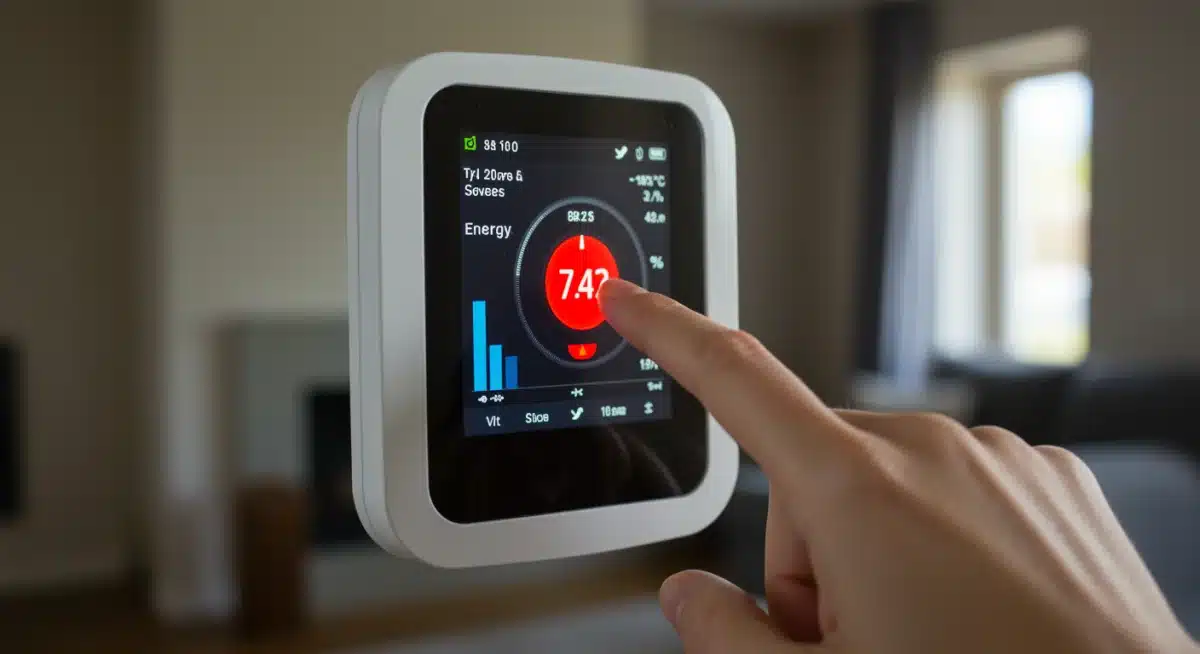
Key Security Gadgets Under $100
- Contact Sensors: Alert homeowners when doors or windows are opened.
- Mini Indoor Cameras: Offer live video feeds and motion detection for specific areas.
- Video Doorbells (Entry-Level): Provide visual monitoring of your doorstep and two-way audio communication.
Smart Climate Control: Thermostats and Sensors
While premium smart thermostats often exceed the $100 mark, entry-level smart thermostats and smart temperature/humidity sensors are becoming available within this budget, offering foundational climate control benefits. These devices contribute to significant energy savings by intelligently managing heating and cooling based on occupancy, schedules, and even external weather conditions.
A smart temperature sensor, for example, can integrate with a basic smart thermostat or smart plug to ensure specific rooms maintain a comfortable temperature, avoiding over-cooling or over-heating unoccupied spaces. This granular control minimizes energy waste and optimizes comfort, leading to lower utility bills over time, directly impacting the homeowner’s financial outlay.
Benefits of Smart Climate Management
Implementing smart climate control solutions allows for precise temperature regulation, preventing energy overconsumption. The ability to pre-cool or pre-heat your home before arrival, or automatically adjust settings when away, contributes substantially to reducing the overall energy footprint. These small investments yield consistent returns.
Convenience and Lifestyle Enhancements
Beyond direct financial savings, smart home gadgets under $100 also significantly enhance daily convenience and lifestyle quality. Devices like smart speakers, universal remotes, and robotic vacuum cleaners (entry-level models) streamline routines, reduce manual tasks, and make homes more responsive to residents’ needs. These improvements, while not always directly measurable in dollars saved, contribute to a higher quality of life and reclaim valuable time.
Smart speakers, for instance, act as central hubs for controlling other devices, playing music, and providing information with simple voice commands. Robotic vacuums handle daily floor cleaning, freeing up time for other activities. These conveniences, once considered luxuries, are now affordable necessities for many homeowners seeking a more efficient and comfortable living environment in 2025.
Gadgets for Daily Productivity
- Smart Speakers: Voice control, information retrieval, and smart device management.
- Universal Remotes: Consolidate control over multiple entertainment devices.
- Entry-Level Robot Vacuums: Automate daily floor cleaning tasks.
Navigating the 2025 Market: What to Look For
As the market for smart home gadgets under $100 expands, US homeowners should prioritize compatibility, functionality, and ease of setup. It’s crucial to select devices that integrate well with existing smart home ecosystems (e.g., Amazon Alexa, Google Home, Apple HomeKit) to avoid fragmented experiences. Look for products from reputable brands that offer reliable performance and adequate customer support.
Reading reviews and comparing features is essential to ensure the gadget meets specific needs without unnecessary frills. Many devices now offer cloud-based functionalities, which can sometimes come with optional subscription fees for advanced features. Homeowners should understand these potential additional costs to accurately assess the long-term financial impact of their purchases.
Smart Buying Checklist
- Compatibility: Ensure it works with your existing smart home platform.
- Core Functionality: Does it meet your primary need effectively?
- Reviews & Reputation: Check user feedback and brand reliability.
- Hidden Costs: Be aware of potential subscription fees for advanced features.
| Key Benefit | Financial Impact |
|---|---|
| Energy Efficiency | Reduced utility bills through smart plugs and lighting automation. |
| Enhanced Security | Affordable monitoring and deterrence, potentially lowering insurance or preventing losses. |
| Climate Control | Optimized heating/cooling saves on energy costs, increasing comfort. |
| Convenience & Time Savings | Streamlined routines and automated tasks, indirectly saving money and improving quality of life. |
Frequently Asked Questions
Smart plugs and smart light bulbs are among the most impactful. Smart plugs reduce ‘vampire drain’ from electronics, while smart bulbs allow for scheduling and dimming, significantly cutting down on electricity consumption and lowering monthly utility bills for homeowners.
Yes, absolutely. Devices like smart door/window sensors, basic indoor cameras, and entry-level video doorbells provide real-time alerts and monitoring capabilities. These gadgets act as effective deterrents and offer peace of mind without requiring a large investment in complex security systems.
While premium models are costly, affordable smart thermostats or temperature sensors can optimize heating and cooling. By learning your schedule or allowing remote control, they prevent energy waste in unoccupied rooms, leading to noticeable reductions in energy bills over time.
Some budget devices might offer advanced features contingent on optional subscription fees, such as extended cloud storage for camera footage or premium automation services. Homeowners should always review product specifications to understand if any recurring costs apply beyond the initial purchase price.
Prioritize compatibility with your existing smart home ecosystem (e.g., Alexa, Google Home). Also, focus on devices that offer strong core functionality for your specific needs, come from reputable brands, and have positive user reviews to ensure reliability and value for money.
Looking Ahead
The trajectory for smart home gadgets under $100 indicates continued innovation and wider adoption. As technologies mature and production scales, even more sophisticated functionalities are expected to become affordable, further blurring the lines between budget and premium devices. Homeowners should anticipate ongoing developments in AI integration and enhanced interoperability, promising an even more seamless and financially beneficial smart home experience in the immediate future. This trend underscores a broader shift towards accessible technology empowering everyday living.
